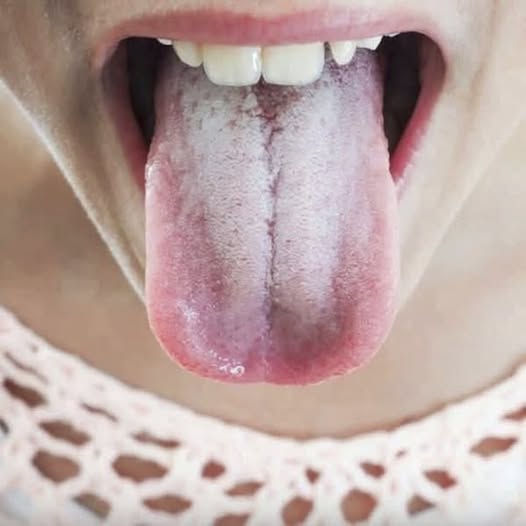Dry mouth and dehydration can also contribute. When saliva production drops, bacteria and dead cells accumulate on the tongue’s surface, creating a pale coating. Fortunately, in these cases, gently brushing your tongue and using an antibacterial mouthwash is often enough to restore a healthy appearance.
When It Might Be Something More
In some instances, white patches on the tongue point to chronic irritation or more serious conditions:
Leukoplakia: Characterized by thick, white plaques that don’t easily scrape off, often due to smoking, alcohol use, or constant friction. While usually benign, it should be evaluated by a healthcare provider, as it may sometimes precede oral cancer.
Geographic tongue: This harmless condition causes red, smooth patches bordered by white lines that change location over time. While not serious, it can cause mild irritation.
Lichen planus: An immune-related condition that produces white, lacy patterns inside the mouth. Though generally mild, it may require treatment to manage discomfort.
Syphilis: In its secondary stage, this sexually transmitted infection can cause white lesions on the tongue. Early diagnosis and antibiotics are essential.
If your white tongue is accompanied by pain, bleeding, red sores, or swelling, or if it persists for more than two weeks, it’s important to seek medical advice—especially if you have a weakened immune system or another chronic condition.
Prevention and Daily Care
The best way to prevent a white tongue is through consistent oral hygiene and healthy habits:
Brush your teeth and tongue twice a day.
Use antibacterial mouthwash to reduce bacteria buildup.
Stay hydrated, especially if you frequently wake up with a dry mouth.
Avoid tobacco and limit alcohol, both of which irritate oral tissues.
Eat a nutrient-rich diet to support your immune system and oral health.
Visit your dentist regularly for professional cleanings and check-ups.
When to See a Doctor
In most cases, a white tongue clears up with proper care and hydration. However, if it lingers, causes discomfort, or appears alongside other unusual symptoms, don’t delay a visit to your healthcare provider. A quick examination and possibly a few simple tests can determine the cause and lead you to effective treatment.

